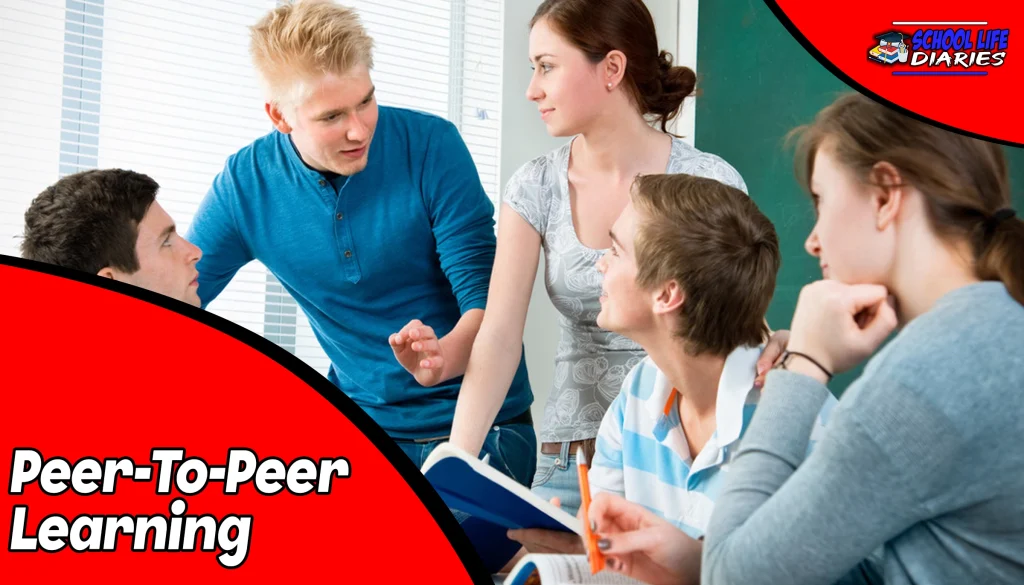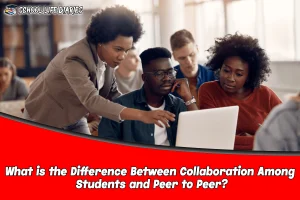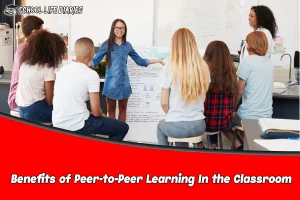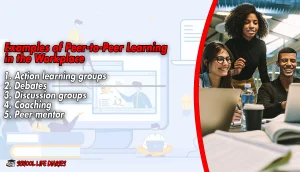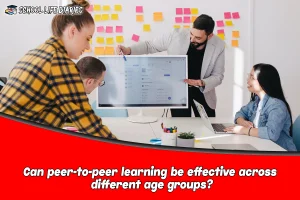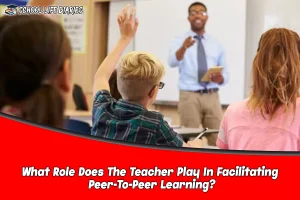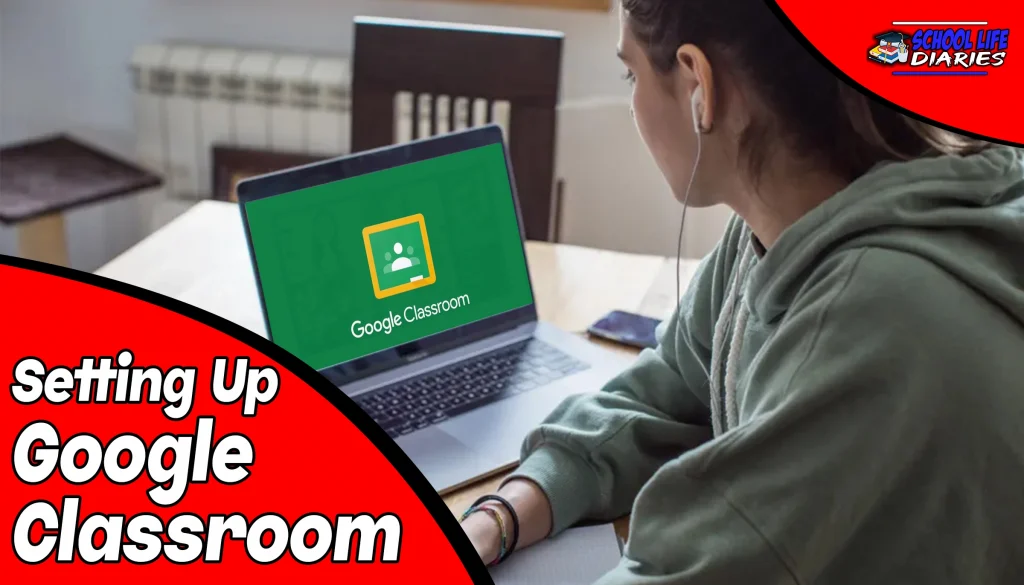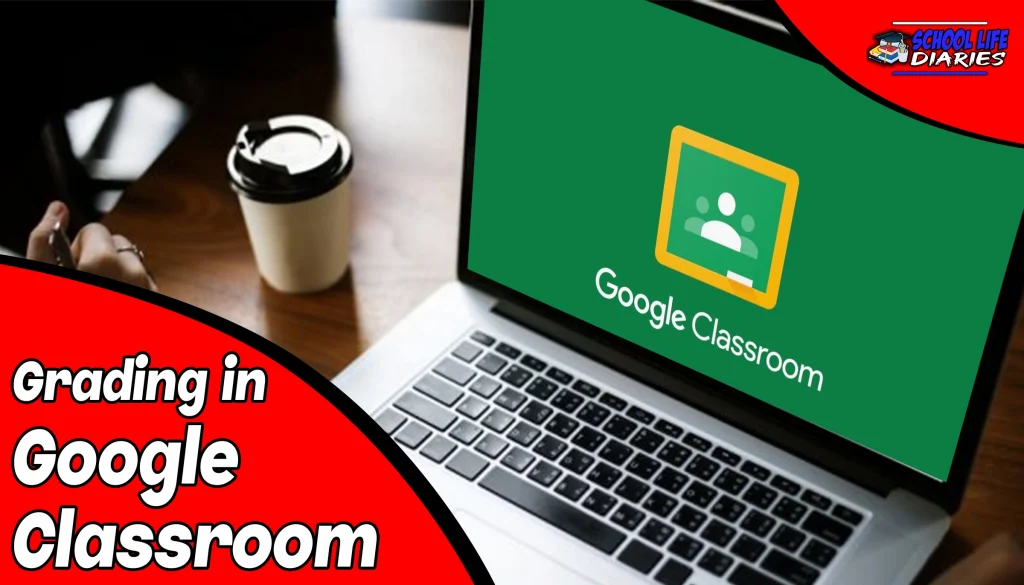Peer-to-peer learning is a concept that has gained increasing attention in both educational and professional settings. This approach to learning involves individuals sharing their knowledge and expertise with one another, rather than relying solely on traditional methods of instruction.
Peer-to-peer learning can occur in various forms, from structured classroom activities to informal discussions among colleagues in the workplace.
The benefits of peer-to-peer learning are many, including improved critical thinking skills, increased confidence and motivation, and the development of important social skills. This approach allows individuals to take ownership of their own learning process and encourages them to actively engage with their peers.
In this article, we will explore the concept of peer-to-peer learning in more depth, examining its various forms and highlighting some examples of its successful implementation in both educational and professional contexts.
What Is Peer-to-Peer Learning?
The concept of peer-to-peer learning refers to a pedagogical approach in which individuals engage in mutual learning processes without the need for traditional hierarchies or instructor-led teaching, leading to a sense of autonomy and empowerment among learners. Peer-to-peer learning is based on the idea that learners can acquire knowledge and skills from each other through collaboration and informal interactions, rather than relying solely on formal instruction.
This approach offers numerous advantages, including increased motivation and engagement, improved critical thinking skills, and enhanced social connections among learners.
One of the main challenges is ensuring that all participants have equal opportunities to contribute and learn from each other. Another challenge is maintaining accountability among learners, as there may not be a formal authority figure overseeing the process. To overcome these challenges, various techniques have been developed for facilitating effective peer-to-peer learning such as setting clear expectations for participation and providing regular feedback on progress.
With proper planning and implementation using appropriate techniques like setting clear expectations for participation or providing regular feedback on progress can make this type of learning both enjoyable and effective.
What is the Difference Between Collaboration Among Students and Peer to Peer?
Collaboration among students can be distinguished from peer-to-peer learning based on the fact that collaboration involves working together towards a common goal, while peer-to-peer learning is more focused on knowledge sharing and skill-building through mutual teaching and feedback.
Collaboration styles are often used to complete group projects or assignments, where each member contributes their own unique skills and perspectives to achieve a shared objective. In contrast, peer-to-peer dynamics involve individuals taking turns in teaching and learning from one another.
One of the advantages of collaboration among students is that it fosters teamwork and communication skills, which are valuable in both academic and professional settings.
When working collaboratively, different members can bring their own strengths to the table, leading to a more diverse range of ideas being generated. There may also be challenges associated with collaboration such as unequal contributions or conflicts between team members.
On the other hand, peer-to-peer learning can provide opportunities for individuals to learn at their own pace while receiving personalized feedback from someone who has already mastered the subject matter.
This type of learning approach encourages active participation from all involved parties as they take turns in teaching and providing constructive criticism. Furthermore, by teaching others what they have learned themselves, individuals are able to solidify their understanding of a given topic while also acquiring valuable leadership skills.
The Differences in Peer-to-Peer Learning in the Classroom and the Workplace
Distinctions between peer-to-peer learning in the classroom and the workplace can reveal specific factors that influence knowledge-sharing and skill-building.
In a classroom setting, peer-to-peer learning primarily takes place among students who are at the same level of academic standing. The focus is on collaborating with each other to understand complex concepts and complete assignments together.
Conversely, in a workplace setting, peer-to-peer learning typically involves employees with varying levels of experience and expertise working collaboratively to improve their skills.
One of the advantages of peer-to-peer learning in the classroom is that it encourages students to take ownership of their education. By working together, they develop critical thinking skills and learn how to articulate their ideas effectively. However, there are also challenges associated with this approach, such as ensuring that all students have equal opportunities to contribute and avoiding groupthink.
In contrast, one advantage of peer-to-peer learning in the workplace is that it allows employees to learn from each other’s experiences on-the-job. Some challenges include finding time for employees to participate in these types of activities while balancing workloads and ensuring that knowledge transfer occurs across different departments within an organization.
Benefits of Peer-to-Peer Learning In the Classroom
By facilitating critical thinking and effective articulation of ideas, peer-to-peer learning in the classroom can empower students to take ownership of their education and enhance their overall academic performance.
One major benefit of peer-to-peer learning is that it allows students to receive feedback from their peers, which can be just as valuable as receiving feedback from a teacher. When students work together to solve problems or complete assignments, they are able to share different perspectives and approaches that may not have been considered otherwise.
This type of collaboration encourages creativity and innovation while also fostering a sense of community within the classroom.
Another strategy for implementing peer-to-peer learning in the classroom is through group projects or collaborative assignments. In these situations, students are given the opportunity to take on different roles and responsibilities within the group while working towards a common goal.
This not only helps develop important teamwork skills but also enhances communication and problem-solving abilities. Group projects allow for more personalized instruction as teachers can provide targeted feedback based on individual contributions.
Overall, the impact of peer-to-peer learning in the classroom can greatly benefit both student performance and engagement with course material.
By encouraging critical thinking, collaboration, and communication skills among peers, students are better prepared for real-world scenarios where teamwork and innovation are key components for success.
As such, incorporating strategies for effective peer-to-peer learning should be an important consideration for educators at all levels.
Examples of Peer-to-Peer Learning in the Workplace
In the workplace, peer-to-peer learning can take on different forms. One example is through action learning groups where employees work together to solve real business problems.
Another is through debates, discussion groups, and coaching sessions where peers challenge each other’s ideas and provide constructive feedback. Peer mentorship programs can also be implemented to support career development and knowledge sharing among colleagues.
Action learning groups
Action learning groups are a structured form of peer-to-peer learning that involves small groups of individuals working together to solve problems and learn from their experiences.
These groups usually consist of six to eight members who come from diverse backgrounds and have different levels of expertise.
The group dynamics in action learning groups encourage participants to share their knowledge freely, which creates an environment where everyone can benefit from the collective experience. Problem-solving is a key component of action learning groups, as participants work collaboratively to identify and address real-world challenges.
This process allows group members to apply critical thinking skills and develop creative solutions while receiving feedback and support from their peers. Moreover, participating in these groups can help individuals develop leadership skills by giving them opportunities to lead discussions, facilitate meetings, and provide constructive feedback to other members.
Overall, action learning groups offer a valuable platform for peer-to-peer learning that helps individuals build new competencies while strengthening existing ones in a supportive environment.
Debates
Debates are a structured form of discourse that allows individuals to present arguments both for and against a particular topic.
They are often used in educational settings as a way to encourage critical thinking, improve communication skills, and promote teamwork. One of the main benefits of debates is that they can help participants develop an understanding of different perspectives on a given issue.
This can be particularly useful when it comes to complex topics where there may not be a single clear answer.While debates have many potential benefits, they also have their drawbacks. For example, some people may find them intimidating or stressful, which could negatively impact their performance. Additionally, debates can sometimes become contentious or hostile if participants become overly invested in their positions.
Despite these potential downsides, however, many people believe that debates are an effective way to engage with important issues and promote meaningful dialogue around difficult topics. Ultimately, the effectiveness and impact of debates will depend largely on the skill and preparation of the participants involved.
Discussion groups
Discussion groups provide a platform for individuals to engage in collaborative and interactive conversations around a particular topic or issue.
These groups are often used as a tool for peer-to-peer learning, where participants share their knowledge, skills, and experiences with each other. The group dynamics of discussion groups can be beneficial in promoting active participation among members, which enhances the learning experience.
One of the key benefits of discussion groups is the opportunity for constructive feedback. Participants can receive feedback from their peers on their ideas and perspectives, which allows them to refine their arguments and viewpoints.
This helps individuals to develop critical thinking skills and broaden their understanding of complex issues through exposure to diverse perspectives. Moreover, discussion groups foster an environment that promotes open communication and respectful dialogue among members, which encourages participants to express themselves without fear of judgment or criticism.
As such, discussion groups are an effective means of facilitating peer-to-peer learning by creating a supportive space for individuals to exchange ideas and learn from each other’s experiences.
Coaching
Coaching is a form of experiential learning that has gained popularity in recent years due to its collaborative and skill-sharing nature. Collaborative coaching involves a trained professional working with an individual or group to identify areas for improvement, set specific goals, and provide guidance and support throughout the learning process.
The coach acts as a facilitator, encouraging feedback exchange between participants, promoting open communication, and creating a safe space for experimentation. One of the main benefits of coaching is that it provides personalized attention to each participant’s needs.
This individualized approach allows for targeted skill development and growth opportunities tailored specifically to each person’s unique strengths and weaknesses. Coaching can help individuals develop self-awareness by identifying blind spots or limiting beliefs that may be hindering their progress.
Peer mentor
A peer mentor is an experienced individual who provides guidance and support to a less-experienced person, sharing their knowledge and experience to help the mentee achieve their goals.
Peer mentoring can be an effective way for individuals to learn from one another in a non-hierarchical environment. Mentors are often matched with mentees based on shared interests or goals, creating a sense of community and support. Training programs for peer mentors can help ensure that they have the necessary skills and knowledge to provide effective guidance.
These programs may cover topics such as active listening, communication skills, goal-setting, and problem-solving techniques. Evaluation metrics can also be used to measure the effectiveness of peer mentoring programs, such as tracking progress toward specific goals or gathering feedback from participants.
How to Implement Peer-to-Peer Learning in Your Organization?
To successfully implement peer-to-peer learning in an organization, it is essential to establish clear goals and objectives that are aligned with the company’s overall mission and vision.
This will help ensure that the peer-to-peer learning program is integrated into the company’s culture and contributes to achieving its broader goals. It is important to identify the potential benefits and challenges of implementing a peer-to-peer learning program.
Measuring success is another critical component of implementing a successful peer-to-peer learning program.
This involves setting metrics for success and tracking progress towards those metrics over time. By doing so, organizations can determine whether their program is effective and make necessary adjustments along the way. There are some best practices that organizations should follow when implementing a peer-to-peer learning program.
These include providing adequate training for both mentors and mentees, creating opportunities for collaboration between peers, encouraging feedback from participants, and ensuring that there are clear guidelines for participation in the program.
By following these best practices, organizations can create a successful peer-to-peer learning environment that benefits both individuals involved in the program as well as the organization as a whole.
Can peer-to-peer learning be effective across different age groups?
Effective implementation of peer-to-peer learning across different age groups is a significant concern in the field of education and training. Cross-generational learning can be challenging due to differences in experience, knowledge, and communication styles. However, when done correctly, it can lead to numerous benefits for both younger and older learners.
One effective strategy for cross-generational peer-to-peer learning is to create diverse groups that include members from different age groups. This allows learners to gain exposure to different perspectives and experiences while also promoting intergenerational understanding and respect.
Additionally, incorporating technology into the learning process can help bridge the gap between generations by providing a common platform for collaboration. Younger learners benefit from gaining insight into their future careers and industries while also developing communication skills with older peers.
Older learners benefit from staying abreast of new technologies and trends while also having an opportunity to pass along their knowledge and expertise to younger generations. Overall, effective strategies for cross-generational peer-to-peer learning can create a more dynamic educational environment that promotes lifelong learning and personal growth.
What Role Does The Teacher Play In Facilitating Peer-To-Peer Learning?
The teacher’s role in facilitating peer-to-peer learning involves creating a supportive and inclusive environment where learners can collaborate, share ideas, and provide feedback to one another.
The teacher plays a critical role in guiding students to work collaboratively toward achieving common goals. The teacher must encourage active listening, respect for differing opinions, and constructive criticism among peers.
Facilitation techniques such as establishing clear expectations for group work, providing regular feedback on progress, and encouraging reflection on the learning process are crucial for the success of peer-to-peer learning. Additionally, teachers must be adept at identifying potential barriers that may impede effective collaboration and find ways to overcome them.
Effective facilitation by the teacher can enhance student engagement and promote a deeper understanding of concepts through active participation. Despite its benefits, peer-to-peer learning poses several challenges for teachers. One significant challenge is ensuring that all students actively participate in group activities.
Teachers must be vigilant about monitoring student interactions within groups to ensure that no one is excluded or left out due to differences in background or experience levels.
Conclusion:
In conclusion, peer-to-peer learning is a valuable approach that has gained popularity in both classroom and workplace settings. It involves learners collaborating with each other to share knowledge and skills.
Peer-to-peer learning differs from collaboration among students as it emphasizes the interaction between learners rather than the instructional design of the teacher. Its benefits include increased engagement, improved critical thinking, and enhanced communication skills.
Implementing peer-to-peer learning requires careful planning, effective facilitation, and support from management or teachers. While it can be effective across different age groups, the role of the teacher in facilitating this approach cannot be overlooked.
Overall, peer-to-peer learning is a powerful tool for fostering meaningful connections among learners while enhancing their knowledge acquisition and development.

